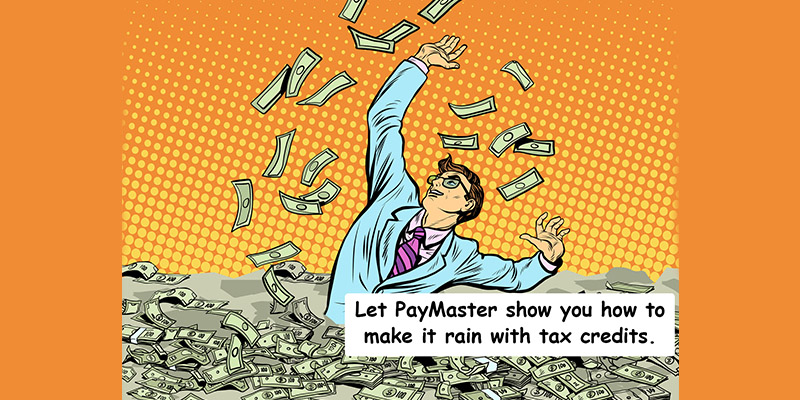The Credit For Portion Of Employer Social Security Paid With Respect To Employee Cash Tips, or Excess FICA Tax Credit on Tips, for short, to be exact.
If you are familiar with this tax credit, then congratulations, you are one of the few (just be sure you are not a victim to the ‘Confusions’ I point out below). The IRS recently reported that for tax 2012 (yeah, it takes them this long to report), 66,400 taxpayers took advantage of this credit. This quantity seemed underwhelming to me, so I did some research as to how many businesses were potential candidates. What I found was that according to the Bureau of Labor Statistics, there were over 600,000 establishments that I believe would qualify for the credit for that same year. Sure, some taxpayers may own multiple establishments, but my experience is that the majority are a 1:1 ratio. Of those 66,400 taxpayers reporting, the credit generated was just over $1.3 billion, so there is a huge amount of unclaimed credits due to negligence in understanding tax credits between the business owners and their tax preparers.
In 1987, employers became required to pay the employer’s share of FICA taxes on all tips earned by their employees. Six years later, in 1993, the IRC 45 B was passed allowing employers to claim a tax credit for the FICA taxes paid on tips reported in excess of minimum wage after December 31st, 1993. That means this credit has been around for 24 years, so it is extremely surprising to me how many people are unfamiliar with it.
I would like to further point out that there is much confusion as to how the credit is determined, even by those who are familiar, so let’s take a look at it in detail.
Confusion #1 – the ‘minimum wage’ referenced by the Code is the minimum wage based on my state or the federal. This is FALSE. Despite the federal minimum wage currently being $7.25 per hour, the minimum wage used for this credit is fixed at $5.15 per hour. In 2007, when the federal minimum wage increased from $5.15 to $5.85 per hour, the Small Business Work Opportunity Act of 2007 froze the federal minimum wage at $5.15 for the purpose of this credit.
Confusion #2 – the business has tipped employees who report their tips, such as a hair salon or valet parking, so they are eligible for the credit. This is FALSE. Unfortunately, while many businesses have employees who customarily receive tips, only those in the food and beverage industry are eligible.
Confusion #3 – the credit is immediate and can be taken from the quarterly federal payroll tax returns. This is FALSE. The credit is applied to IRS form 8846, Credit for Employer Social Security and Medicare Taxes Paid on Certain Employee Tips and is taken on the year end business tax return. Figures you need a form with a title that is almost as long as the name of the credit. It is a true tax credit, so it is only used to offset a tax liability, but there is a carry-back and carry-forward property in the event there is no tax liability for the year the credit was generated.
With that out of the way, let’s look at how the credit is calculated with a couple of examples. I will assume that the employee is paid at the state’s minimum wage for a tipped employee, which is typical of most food and beverage establishments.
Example #1
Tipped employee works in Florida where the state’s minimum wage is $5.23 (2018) and works 40 hours and receives $200 in tips. Since the wage rate of $5.23 is greater than the credit rate of $5.15, this is an easy one as 100% of the tips are subject to the credit, and there is really just one step. Calculate the credit.
Step 1. $200 tips x FICA tax rate of 7.65% = $15.30
Example #2
About half of the states have a tipped employee minimum wage below $5.15 per hour, and this Department of Labor website provides a listing of all states for quick reference.
Tipped employee works in Texas where the state’s minimum wage is $2.13 and works 40 hours and receives $200 in tips. Since the wage rate of $2.13 is less than the credit rate of $5.15, we break this down into 4 steps.
Step 1. $5.15 (credit rate) less $2.13 (hourly rate paid) = $3.02 (rate up to ‘minimum wage’)
Step 2. $3.02 x 40 (hours worked) = $120.80 (amount of tips not subject to credit)
Step 3. $200.00 (tips reported) less $120.80 = $79.20 (tips subject to credit)
Step 4. $79.20 x FICA tax rate of 7.65% = $6.06
If you outsource your payroll, then your service provider should provide a report to you after year end with your credit calculated. If they do not provide this report automatically, then it may be one you have to request.
In summary, I have found that the average restaurant, in a state where the minimum wage is over $5.15 per hour, will recognize a credit between $800 – $1,000 per tipped employee, per year. Are you getting the credit you deserve?
As a bonus for making it this far, be sure you check out the other tax credits available for businesses on our website.
While I make every attempt to ensure the accuracy and reliability of the information provided in this article, the information is provided “as-is” without warranty of any kind. PayMaster, Inc or Romeo Chicco does not accept any responsibility or liability for the accuracy, content, completeness, legality, or reliability of the information contained. Consult with your CPA, Attorney, and/or HR Professional as federal, state, and local laws change frequently.

